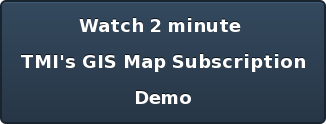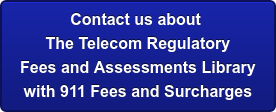 The Regulatory Mix, TMI’s daily blog of telecom related regulatory activities, is a snapshot of PUC, FCC, legislative, and occasionally court issues that our regulatory monitoring team uncovers each day. Depending on their significance, some items may be the subject of a TMI Briefing.
The Regulatory Mix, TMI’s daily blog of telecom related regulatory activities, is a snapshot of PUC, FCC, legislative, and occasionally court issues that our regulatory monitoring team uncovers each day. Depending on their significance, some items may be the subject of a TMI Briefing.
FCC Lifeline National Verifier
The FCC announced that USAC had submitted a Draft National Verifier Plan (Plan) to the Wireline Competition Bureau and the Office of Managing Director (OMD) on November 30, 2016, as required by the FCC’s Lifeline Order. The draft Plan is available for public review here. USAC will accept comments, questions, and feedback on the plan beginning December 5, 2016. While feedback is invited at any time, only comments submitted between December 5, 2016, and December 30, 2016, can be considered for incorporation into the Final National Verifier Plan. Additional instructions concerning submission of comments and feedback are available on the USAC site. The Plan will be updated approximately every six months throughout the implementation and any Plan changes will be reflected in USAC’s National Verifier Implementation Updates.
FCC Measuring Broadband America Report
The FCC released the results of its sixth “Measuring Broadband America” report. The report shows that broadband speed offerings to the average consumer continue to increase at a rapid pace and broadband service providers generally are delivering actual speeds that meet or exceed advertised speeds. However, results are not uniform across technologies. The report finds a growing disparity in advertised download speeds between many DSL-based broadband services and most cable- and fiber-based broadband services. Average DSL speeds have increased only slightly over the past five years and satellite speeds, over a shorter time interval, have remained constant. Among other things:
- The median download speed, averaged across all participating ISPs, has almost quadrupled, from approximately 10 Mbps in March 2011 to approximately 39 Mbps in September 2015. Compared to last year’s value of 32 Mbps, this year’s median download speed was an increase of approximately 22%.
- The average annual increase in median download speeds by technology was 47% for cable, and 14% for fiber, while popular DSL speeds remained largely the same.
- The maximum advertised download speed among the most popular service tiers using cable technologies, increased from 20-30 Mpbs in March 2011 to 100-300 Mpbs in September 2015.
All ISPs using cable, fiber, or satellite technologies advertise speeds for services that on average are close to the actual speeds experienced by their subscribers. Fixed cable and fiber broadband customers experienced speeds that were 100% or better than advertised.
FCC Access Charge Filings Introducing Broadband-only Loop Service
The FCC released a Public Notice providing further instructions to rate-of-return regulated ILECs regarding access charge tariff filings introducing Consumer Broadband-only Loop service. Rate-of-return ILECs choosing to offer Consumer Broadband-only Loop service beginning January 3, 2017, whether on a tariffed or detariffed basis, are required to file pertinent access charge tariffs and/or Tariff Review Plan (TRP) worksheets on December 19, 2016, or December 27, 2016, depending on the type of changes proposed.





